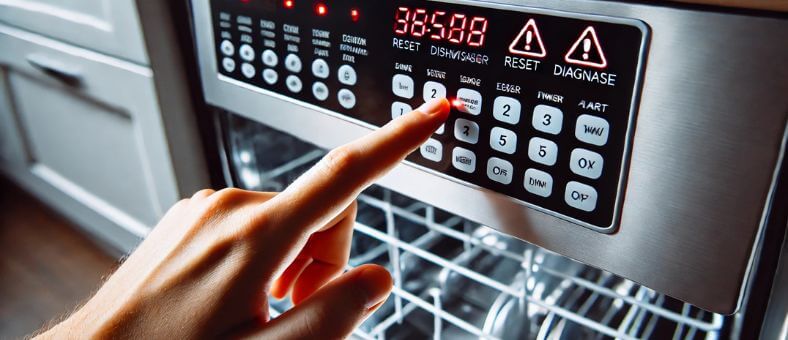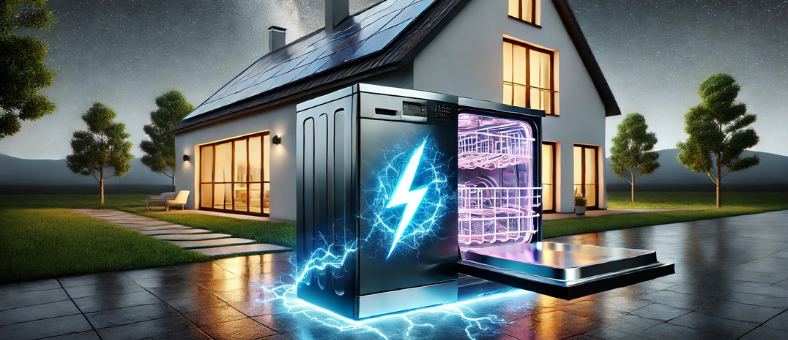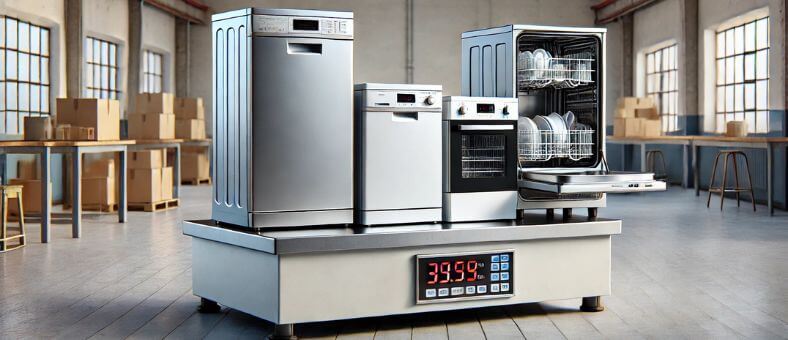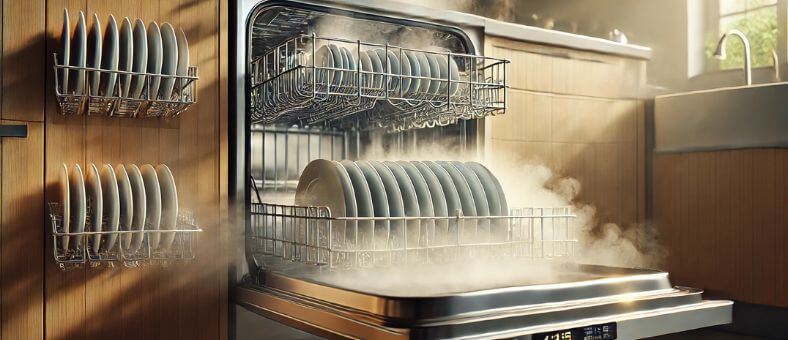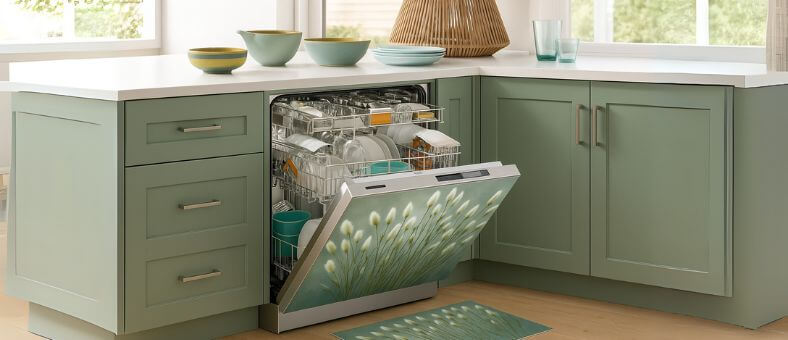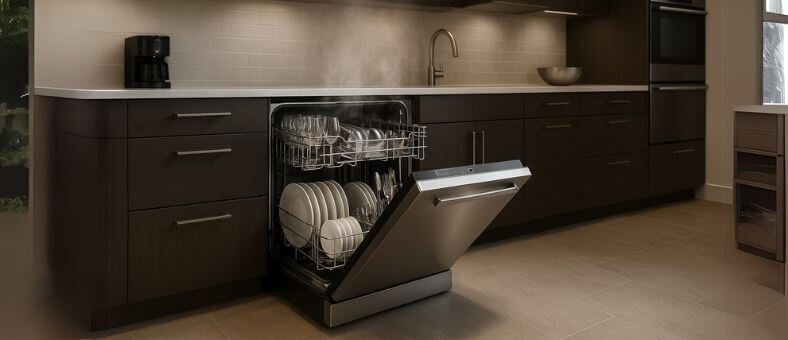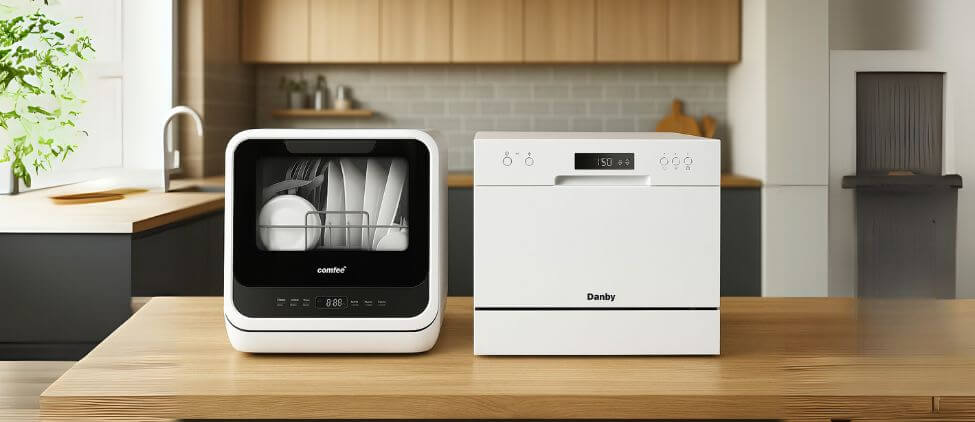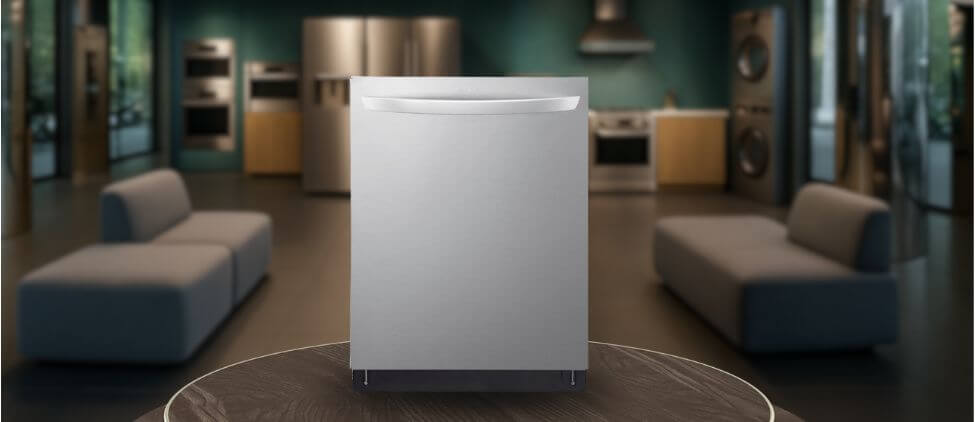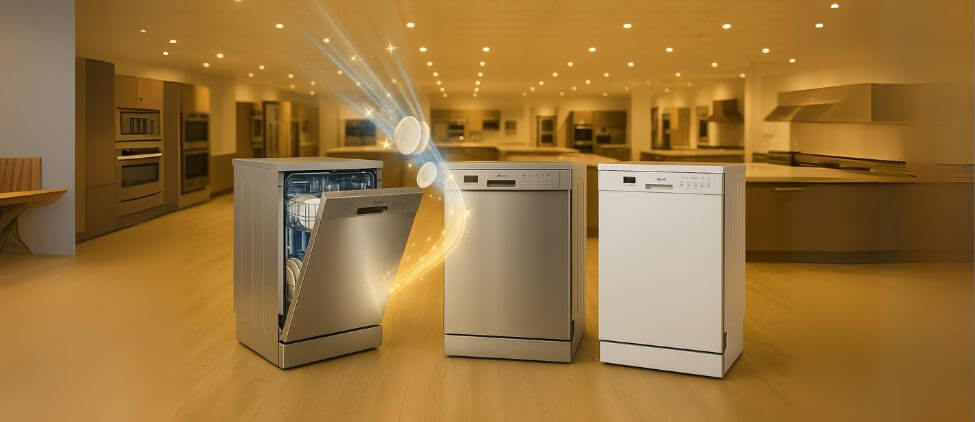There you are, ready to get those dishes sparkling clean, but then, a roadblock: your dishwasher control panel is not working. It’s like your trusted dish-cleaning companion has suddenly gone silent, leaving you in a lurch with a sink full of dirty dishes. If you’re nodding your head, thinking, “That’s exactly what happened to me!” you’ve stumbled upon the right piece.
Dishwashers, like all household appliances, can occasionally throw a tantrum. And when the control panel, essentially its communication center, goes haywire, it’s inconvenient; it can also feel like you’re trying to decipher an alien technology. But fear not! Before you surrender to despair or (gasp!), consider washing those dishes by hand, let’s delve deep into understanding the root causes behind this issue.
Here, we will explore the top 5 reasons your dishwasher control panel is not working. Stick with us, and we’ll turn this dishwasher distress into a distant memory. Ready to dive in? Let’s get those dishes (and your peace of mind) back in sparkling order!
Professional Repair Insights
60% of dishwasher control panel problems are resolved with simple resets, indicating many issues might be easier to fix than anticipated.
Table of Contents
Reason#1. Electrical Glitches and Outages
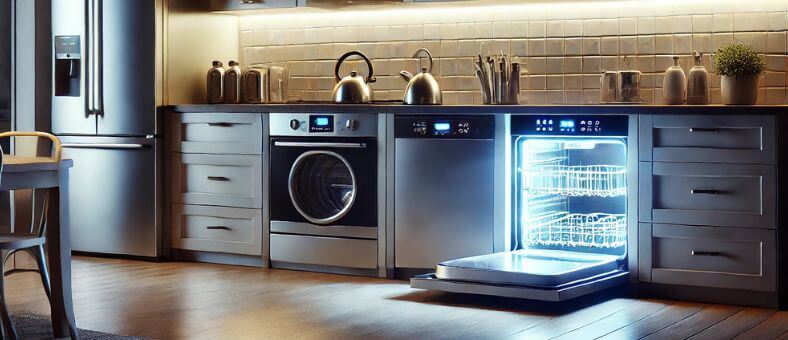
We’ve all been there. You’re expecting your trusty dishwasher to whirl into action, but instead, it sits in stubborn silence. Before you start wondering if your appliance has taken a sudden day off, consider this: electrical glitches and outages could be the culprits behind your dishwasher’s unexpected mutiny.
Common Signs of Electrical Issues
Electrical issues in dishwashers don’t always come with dramatic symptoms. More often than not, they manifest in subtler ways that might not immediately scream “electrical problem” but are telling nonetheless:
- Unresponsive Buttons: Despite pressing multiple times, the dishwasher fails to start or change its cycle.
- LED Display Issues: A flickering, dim, or completely blank digital display is a clear indicator of electrical problems.
- Intermittent Power: The dishwasher starts but unexpectedly stops mid-cycle without completing it.
- No Power at All: While it may seem obvious, it’s important to check if other appliances are also non-functional, which could indicate a broader power outage.
Accidental Child Lock Activation
If your control panel isn’t responding, it might be due to the child lock being inadvertently activated. Before troubleshooting or assuming a malfunction, double-check to ensure the child lock isn’t engaged.
Quick Fixes for Minor Electrical Glitches
Don’t get discouraged by electrical glitches; often, the fixes are easier than you might think:
- Power Cycle: Simply turn off the dishwasher, wait 10 minutes, and then turn it back on. This mini-reboot can often resolve minor issues.
- Check the Power Cord: Make sure that the dishwasher’s power cord is fully plugged in. It can loosen over time or might have been unplugged accidentally.
- Examine the Circuit Breaker: Sometimes, the problem may lie with the dishwasher or your home’s electrical setup. Check if the circuit breaker has tripped. If so, flip it back to the ‘on’ position.
- Door Latch: Confirm that the door latch is properly closed. Due to its built-in safety features, the dishwasher won’t start if it’s open.
- Consult the User Manual: Don’t forget about the troubleshooting section in the dishwasher’s user manual—it’s there to help!
Reason#2. Faulty Touchpad or Control Panel
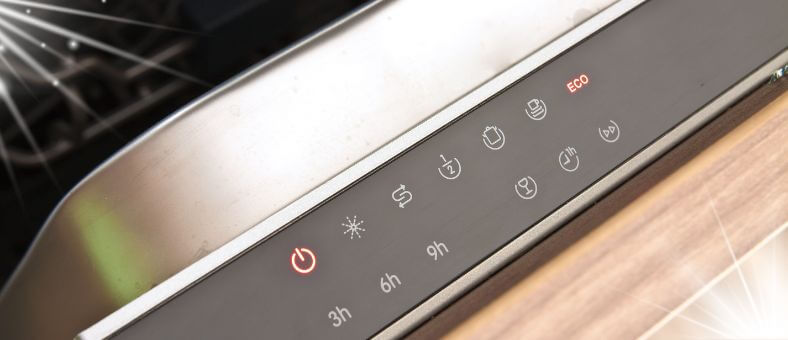
If your dishwasher’s behaving like a fickle friend, sometimes responding, sometimes not, then you might be dealing with a faulty touchpad or control panel. These components are the brain and voice of your dishwasher. When they go on the fritz, it can feel like your trusty appliance has suddenly learned the art of giving mixed signals.
Avoid Over-Pressing
Consistently pressing the touchpad buttons with excessive force can wear them out faster. Use a gentle touch when selecting your desired cycle or setting. If a button isn’t responding, it’s more likely due to an internal issue than needing a harder push.
Distinguishing Between Touchpad and Control Panel Issues
Understanding whether the issue lies with the touchpad or the control panel can be challenging, as symptoms often overlap. Here’s how to identify which component might be failing:
Touchpad Troubles
Selective Responsiveness: Similar to some keys on a keyboard ceasing to function, if certain buttons on the touchpad don’t respond while others do, it’s likely a touchpad issue.
Control Panel Conundrums
- Complete Unresponsiveness or Erratic Behavior: The control panel could be the culprit if the entire touchpad is unresponsive or acts erratically.
- Random Cycles: Starting a cycle different from the selected one can also indicate a malfunctioning control panel.
For a visual demonstration and detailed troubleshooting tips on how to address issues with your dishwasher buttons not responding, watch our helpful video:
When to Consider Replacement

Deciding whether to repair or replace can be tough:
- Age of the Dishwasher: If your dishwasher has been a faithful kitchen aide for over a decade, replacing it might be more cost-effective than ongoing repairs.
- Cost of Repairs: When repair expenses approach or surpass the cost of a new dishwasher, upgrading becomes a financially sound decision.
- Recurring Issues: Frequent breakdowns, especially if you’ve addressed the same issue before, suggest a deeper underlying problem.
- Warranty Check: Always check if your dishwasher is still under warranty, as this can significantly reduce repair costs.
Reason#3. Blocked or Dirty Control Panel
Like a smudgy smartphone screen or a grimy keyboard, your dishwasher’s control panel can accumulate dirt and debris over time. This isn’t just a cosmetic issue; it can affect the functionality of your appliance. However, with some care, your dishwasher can be restored to look and operate as if it’s brand new.
Cleaning the Control Panel
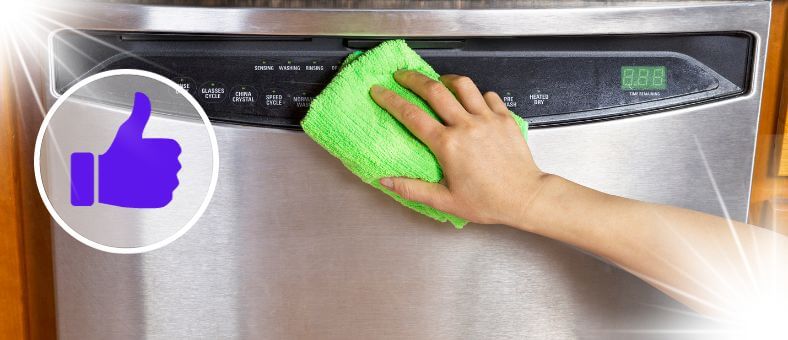
Cleaning your dishwasher’s control panel is straightforward if you know the proper steps. Here are some best practices to follow:
- Switch Off First: Always turn off and unplug your dishwasher before cleaning to avoid accidents.
- Soft Cloth is King: Use a damp cloth to gently wipe away any dirt or fingerprints from the control panel.
- Avoid Harsh Cleaners: Use only mild soapy water for cleaning. Avoid harsh chemicals or abrasive cleaners that damage the touch-sensitive components or the panel’s finish.
- Dry Thoroughly: After cleaning, dry the control panel with a soft cloth to prevent any moisture from damaging the electronics.
Moisture Intrusion
Dishwashers, being constantly exposed to water and steam, can sometimes allow moisture to seep into sensitive areas. If water or steam penetrates the control panel area, it can lead to short-circuiting and subsequent failure of the panel.
Preventing Dirt Buildup
Maintaining a clean control panel not only extends its lifespan but also ensures optimal performance of your dishwasher.
- Routine Wipes: Incorporate a quick wipe-down of the control panel into your weekly cleaning schedule to prevent buildup.
- Watch for Spills: Be careful not to let food particles from messy dishes fall onto the control panel, as they can get stuck in crevices over time.
- Guard Against Splashes: When using the sink or faucet near your dishwasher, be mindful of water splashes. Regularly check and wipe any moisture to prevent long-term damage.
- Location Check: To minimize dirt accumulation, position your dishwasher away from high-traffic dirt areas, such as next to the trash can or under a heavily used countertop.
- Use a Dishwasher Cover: A dishwasher cover can protect the appliance from external dirt and spills. It’s an excellent addition for those looking to preserve the exterior and control panel from accidental splashes or drips.
Reason#4. Malfunctioning Door Latch
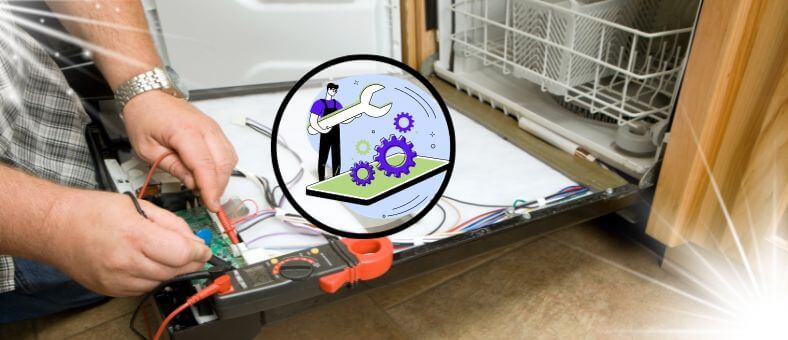
Has your dishwasher ever refused to start, even when everything seemed fine? Before you start panicking, consider checking out the door latch. It’s an often-overlooked component fundamental to your dishwasher’s proper functioning.
Understanding the Door Latch and Control Panel Connection
- Function of Door Latch: Similar to an ignition key in a car, the dishwasher only starts its cycle once the door is securely latched.
- Purpose of Door Latch: Serves as a safety feature to prevent water spillage and ensures the appliance operates safely.
- Issue with Malfunctioning Door Latch: If faulty, it may fail to signal the control panel that it’s safe to begin the cycle, thus halting the dishwasher’s operation despite all settings being correctly in place.
Troubleshooting a Faulty Door Latch
If you suspect the latch is the issue, here are practical steps to address it:
- Visual Inspection: First, check if the latch appears broken or misaligned. Sometimes, a quick adjustment is all that’s needed.
- Clean the Latch Area: Dirt and debris can accumulate around the latch, obstructing its function. Clean it with a damp cloth and a gentle cleaner to remove any gunk that might prevent it from closing properly.
- Examine the Strike Plate: The strike plate is where the door latch catches. Make sure it’s properly aligned and free of damage or bending.
- Listen for the Click: When closing the door, listen for a distinct click indicating the latch is properly engaged. If you don’t hear this, the latch may not secure the door.
- If these steps do not resolve the issue, replacing the door latch may be necessary. Replacing the door latch can resolve issues where the dishwasher doesn’t recognize the door as securely closed. Consider purchasing a quality replacement to ensure your dishwasher operates safely and effectively.
Reason#5. Software or Firmware Issues
As dishwashers become more advanced, they, like other high-tech devices, can experience software or firmware glitches. Issues may arise if the control panel does not respond or behaves unpredictably, indicating a potential problem in the digital system.
Identifying Software Glitches
- Unresponsive Controls: Buttons are pressed, but there is no response.
- Random Cycles: The dishwasher might unexpectedly start or stop cycles without any user commands.
- Erratic Digital Display: The display may show unusual characters or flash randomly.
- Unexpected Error Messages: Error codes or messages that do not match known issues may appear.
Resetting and Updating Your Dishwasher’s Firmware
- Power Cycle: Often, simply turning the dishwasher off and then on again after a few minutes can clear glitches.
- Consult the Manual: Refer to the dishwasher’s manual for specific instructions on performing a soft reset or troubleshooting software issues.
- Check for Firmware Updates: Modern dishwashers, like smartphones, may receive updates to improve functionality or fix bugs. Check the manufacturer’s website or the user manual for guidance on updating firmware.
- Factory Reset: As a last resort, a factory reset can revert the dishwasher back to factory settings, which may solve persistent software issues. Note that this will erase any custom settings.
- Seek Professional Help: If issues persist after trying the above solutions, it might be necessary to seek professional repair services or contact customer support for assistance.
Avoid Interrupted Updates
If your dishwasher is undergoing a firmware update, ensure it’s not interrupted. An incomplete update might cause software issues or glitches. Always wait until the process is fully completed.
Essential Steps to Reset Your Dishwasher Control Panel
Sometimes, all your dishwasher needs is an excellent old-fashioned reset. It’s akin to rebooting a computer when it acts up. Here’s how you can safely reset your dishwasher control panel:
- Step #1: Disconnect from Power – Ensure safety by turning off the dishwasher and unplugging it from the wall socket.
- Step #2: Wait it Out – Leave the dishwasher unplugged for 10-15 minutes to allow its internal circuits to fully discharge.
- Step #3: Plug it Back In – Reconnect the dishwasher to power. If it has a “reset” button, press and hold it for about 10 seconds (refer to your user manual for model-specific instructions).
- Step #4: Run a Test Cycle – After powering up, run a short cycle to confirm the dishwasher is functioning correctly.
Maintenance Tips for Prolonged Efficiency
- Tip #1: Regular Cleaning – Monthly clean the interior, spinner arms, and filter to keep the dishwasher running smoothly.
- Tip #2: Door Seals Matter – Occasionally clean the rubber door seal with a damp cloth to prevent leaks.
- Tip #3: Use the Right Detergent – Opt for dishwasher-specific detergent to avoid residues and blockages.
- Tip #4: Run Full Loads – It’s more energy-efficient to run full loads, but avoid overloading.
- Tip #5: Annual Check – Have a professional annually inspect your dishwasher to address minor issues early, preventing costly repairs.
Wrapping Up: Dishwasher Control Panel Is Not Working
Navigating the waters of a malfunctioning dishwasher can be overwhelming. But as we’ve discovered, understanding the root causes and potential solutions can make the journey smoother. Whether it’s an electrical hiccup, a mischievous touchpad, or a software glitch playing spoilsport, the key is to diagnose early and act decisively. Remember, a well-maintained dishwasher guarantees clean dishes and adds efficiency to your kitchen chores. So the next time your dishwasher throws a silent tantrum, you’ll be better equipped to handle it. Here’s to fewer dishwashing woes and more sparkling outcomes!
At WashDryDazzle, our primary goal is to equip you with invaluable knowledge to simplify your day-to-day tasks; to explore more, check out our central hub of Dishwasher Guides.
Frequently Asked Questions (FAQs)
Are blinking lights an indication of a serious issue with my dishwasher?
Not always. While it’s essential to address blinking lights promptly, the cause could range from minor issues, like a door not fully closed, to more significant problems with the control panel or internal components.
What is the control board in a dishwasher?
The control board is the “brain” of the dishwasher, managing and coordinating its various functions, from cycle selection to water drainage. It processes the inputs from multiple sensors and executes the appropriate actions.
What are the signs of water damage on a dishwasher control panel?
Common signs include unresponsive buttons, erratic display behavior, random error messages, or the dishwasher failing to power on altogether. In some cases, you might notice visible signs of corrosion or moisture behind the panel.
How can I test my dishwasher’s control panel at home?
You can initiate a diagnostic mode (if available) as detailed in your user manual. Alternatively, check if all buttons respond accurately and observe if the displayed settings correspond to your selections. Some models might also have LED indicators that signal specific faults.

